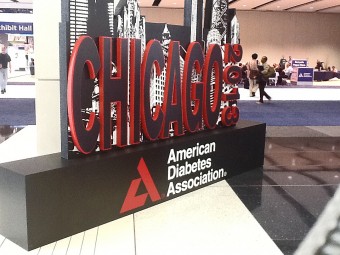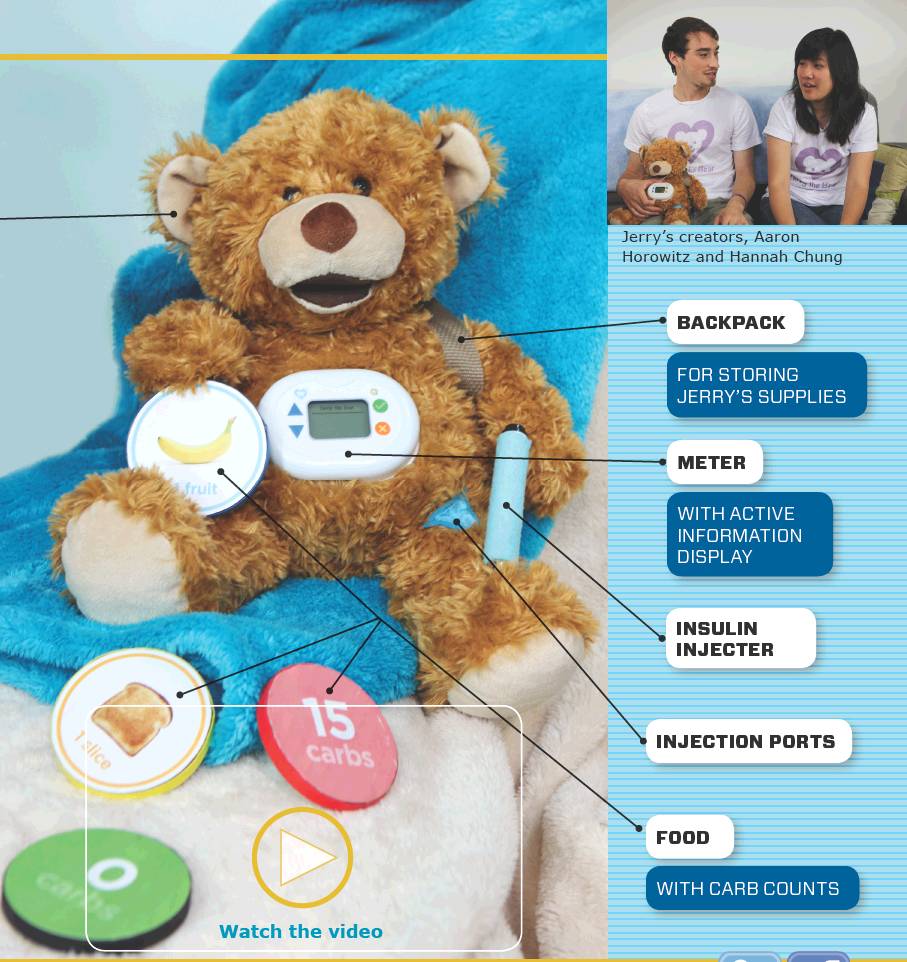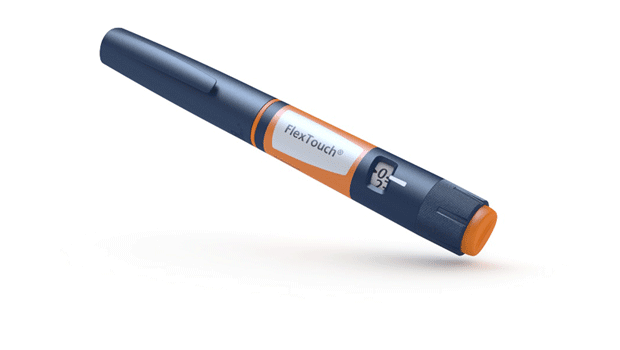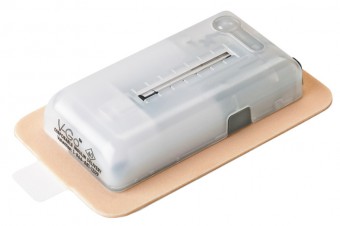A Bee Takes The Sting Out Of Shots
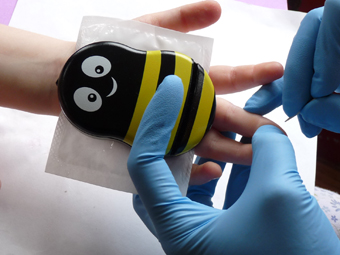
Amy Baxter’s “ah-ha!” moment came on her way home, after an all-night shift, while driving a car badly in need of a wheel alignment. Her invention, Buzzy®, a small vibrating plastic bee cum ice pack, combines kid-friendly packaging, vibration, and cold to give patients and their caregivers control over a common fear of needles, and the pain that goes along with injections. Think aspirin-like relief, but applied before shots, not after.
Baxter, a pediatric emergency room physician, now doubles as CEO of MMJ Labs Inc. Her product, Buzzy®, came from her frustration with the way our medical system addresses pain. Dr. Baxter isn’t just a CEO and an inventor – she’s also a mom. And her dual roles led her to create a solution to “address the problem of patient disempowerment.” All because of a vibrating steering wheel.
She Hasn’t Got Time For The Pain

Dr. Baxter is quite passionate about the importance of making patients feel comfortable with therapy, and her research over the past 10 years has focused on alleviating pain. She admits that the healthcare system has evolved to ignore pain alleviation. “As physicians,” she says, “we are predisposed to not concern ourselves with the pain part [of needles]. We don’t go into medicine if shots bother us and we get used to causing pain. We tell ourselves that some pain is inevitable for a cure.”
The inspiration for Buzzy® stemmed from a recent traumautic experience: her then 4-year-old’s fear of a routine childhood shot. Dr. Baxter saw firsthand the effect of pain, not from a medical point of view, but from a mom’s. The problem her child and she experienced has a label: needlephobia.
Needlephobia isn’t a small-bore problem. Studies show that 63% of all children and 23% of adults fear needles. And the fear can have a major effect on public health. Needlephobia is a primary reason that 25% of Americans don’t get a flu shot, and 10% of adults do not see a doctor – at all.
So what happens if someone has needlephobia and diabetes, a disease that requires regular pokes and sticks? All too often, it’s insufficient treatment and resulting complications. A recent survey conducted among family care physicians attending a national conference reported that more than 60% of them hesitated to prescribe insulin, or didn’t do so, because they believed that patients wouldn’t comply with injection therapy, or would find it a significant burden. When you realize that three-quarters of diabetes care is dispensed by family doctors, not specialists, such a mindset represents a truly staggering challenge.
Peace On A Potential Battleground

Parents with Type 1 children don’t neglect their child because of the fear and pain frequent finger sticks and ether shots or infusion site changes might cause, but it can turn every day into a battle, and no one wants to see their child cry. Still, it is what it is.
“When it comes to diabetes, endrocrinologists just expect that patients have to get used to the needles,” says Baxter. “Yet it is a really big deal for patients, especially when they are first diagnosed. Over the course of a diabetic patient’s lifetime there can be resentment even when that patient has gotten used to the sticks. It assaults their quality of life.”
So Dr. Baxter went to work researching. She learned the physiology of pain. She learned about how to alter pain immediately. Because, as she explains, “I knew that anything that took a long time or required the physicians or healthcare system to intervene wasn’t going to happen. It had to be something that the invested party – the patients – could do themselves.”
Thus, Buzzy®.
Although her research showed that ice could dull pain, she was looking for something more. On the fateful early morning when she pulled into her driveway after a journey filled with vibration, she realized that the shaky steering wheel of her car had had a numbing effect on her hands. The “eureka” moment struck: ice and vibration made the perfect combination for immediate pain relief.
A Basement Headquarters
So, in the basement of her home, Baxter went to work, creating the first prototype: a small striped vibrating device with a slot for a miniature ice pack. That prototype eventually became Buzzy®, now available as a bee, as a ladybug, and as a plain black style with stickers to personalize the device. Although she says that any vibrating device and ice pack can help, the product’s concave design cups the body better and transmits the most ice and vibration to the skin. Since the nerve pathways are spread out, it was important to cover more area for the product to be more successful. The ice pack that works with Buzzy® invokes “descending inhibitory control” — you can tolerate more pain because of how much processing bandwidth that cold sensation takes up in your brain.
Buzzy® is available in 2 versions – one for home use and one for hospitals. Currently, the home Buzzy® is sold on Amazon and on the company’s website (Buzzy4Shots.com) for $39.95. She, and a group of equally dedicated moms who work with her, recently moved production back to the United States. They still work out of Baxter’s basement, hoping to keep overall costs down even though making the product in the U.S. costs more than doing it overseas. “It was important to all of us not to raise the price when we moved production,” she says. “It’s a little tougher on us, but it’s still pennies per poke.”

Research and feedback from patients has guided both the product’s development and its marketing. Because the device has proven to make phlebotomy – drawing blood from a vein for tests – more successful the first time around, Baxter and her team created a highly durable and cleanable hospital-version. So far, they have sold it to more than 700 hospitals and clinics nationwide. MMJ Labs also created distraction cards to be used with Buzzy, after researching the best ways to engage and distract patients having blood drawn.
It’s Not Just For Kids
Buzzy® was designed as a product for children. Baxter never intended to target adults. But it certainly has proven to fill a need that doesn’t go away, for many, as they age. “A problem with our society is that everyone allows children to have a fear of needles, but there is no tolerance for adults who don’t like them,” Baxter says. “Our product has really been embraced by adults. Until now, there hasn’t been a way for them to comfortably bring up fear of needles with their physicians. They might be embarrassed, or feel they’d just be ignored.”
Since daily blood checks and insulin injections become routine, some Buzzy® users only use the product when changing pump infusion sites. “For some people who switch over to a pump – when you only have to deal with it every few days – the dread builds up. Because a pump change is more painful and less frequent, it can build up more anxiety. We’ve learned that Buzzy® helps by empowering people to make that dread go away,” Baxter says. She hopes to release a smaller, more powerful Buzzy® specifically designed for areas like the stomach, thigh, and buttocks by June 2013. A Buzzy® designed specifically for fingersticks is in the works for 2014.
But it is the patient testimonials and the personal stories that most resonate for Baxter and her basement buddies at MMJ Labs. She recalls a moment in the early stages of developing Buzzy® that showed how this small device could have a huge impact. “One of the daughters of our designer was terrified of needles. One day, her father called me and said, ‘We just got told by her pediatrician that her glucose is 536 [mg/dL]. What does this mean?’ And I had to tell him, ‘This means that she has diabetes. Starting now everything changes.’ And because of her terror of needles we immediately got her a Buzzy® prototype. It was the only thing that made her fear of needles better. “
Two months later, Baxter asked how the young patient was doing, and her father replied, somewhat sheepishly, “well, actually she’s doing great, but she doesn’t really need Buzzy® anymore,” Baxter recalls that he looked at that as something embarrassing — that “Buzzy® wasn’t working the way I wanted it to. And I looked at that as the absolute success. To have something that cushions the needle part and make it not that big a deal, when everything else associated with the diagnosis is so huge and overwhelming…I truly see that as a big win.”
Buzzy® is a true labor of love. And one that deserves the buzz it’s creating.
Thanks for reading this Insulin Nation article. Want more Type 1 news? Subscribe here.
Have Type 2 diabetes or know someone who does? Try Type 2 Nation, our sister publication.

